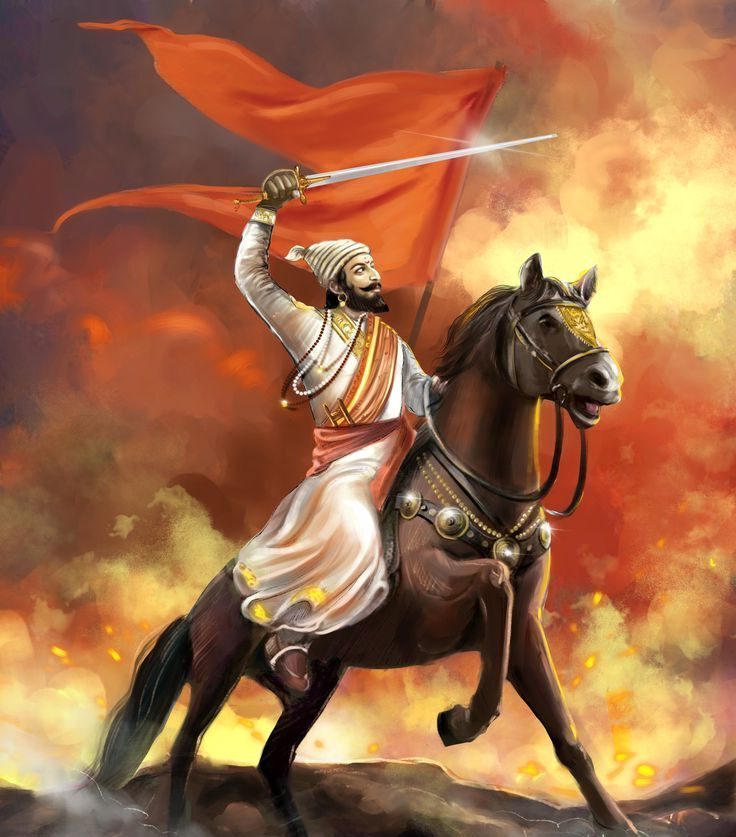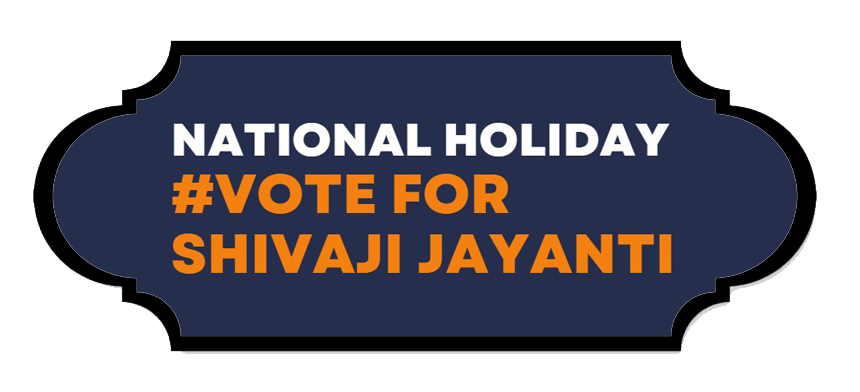Sree Chhatrapati Shivaji Maharaj: The Master of Guerrilla Warfare
Sree Chhatrapati Shivaji Maharaj, the illustrious founder of the Maratha Empire, stands as an indomitable icon in Indian history. His military prowess, underscored by innovative guerrilla warfare tactics, cemented his legacy as one of the greatest warriors and strategists the world has ever known. His brilliance in the art of war allowed him to triumph over formidable foes, including the mighty Mughal Empire and the Bijapur Sultanate, despite their overwhelming numerical superiority.
The Genius of Guerrilla Warfare

Unrivalled Mobility and Speed:
Swift Movements: The Maratha forces, comprising the legendary Mavalas, exemplified agility and speed. These warriors, trained to navigate the treacherous Western Ghats, could outmanoeuvre any foe. Their lightning-fast movements turned the rugged landscape into a formidable weapon against invaders.
Strategic Retreats: Shivaji Maharaj perfected the art of the tactical retreat. After delivering devastating blows to their enemies, his forces would then vanish into the terrain. Consequently, this left their adversaries exhausted and demoralized in their futile pursuit.
Elite Small Units:
Flexible and Fearless Units: Shivaji Maharaj’s army was composed of highly trained, small units capable of independent operations. Embodying the Maratha spirit of resilience and bravery, these units executed hit-and-run tactics with lethal precision, inflicting maximum damage on larger enemy contingents. Their flexibility allowed them to adapt quickly to changing battlefield conditions, enhancing their effectiveness.
Decisive Strikes: These agile units could assemble swiftly for coordinated attacks and disperse just as quickly, making them elusive and deadly. By striking decisively and disappearing into the terrain, they consistently kept their enemies off balance, demonstrating their tactical superiority.
Unmatched Surprise and Deception:
Surprise Attacks: Shivaji Maharaj’s genius lay in striking fear into his enemies with meticulously planned surprise attacks. For instance, his night raids and assaults during inclement weather left his adversaries perpetually on edge. As a result, they never knew when or where he would strike next, further amplifying their sense of unease.
Master of Deception: With unparalleled cunning, Shivaji Maharaj orchestrated elaborate ruses to mislead his enemies, spreading disinformation and creating confusion within their ranks. This strategic brilliance ensured his enemies were always a step behind, bewildered and vulnerable.
Mastery of Terrain:
Exploiting Geography: Shivaji Maharaj’s intimate knowledge of the local terrain was a cornerstone of his strategy. He transformed his homeland’s mountains, forests, and valleys into impenetrable fortresses, where his enemies faltered and fell. Furthermore, he leveraged the natural landscape to his advantage, creating a defensive network that was nearly impossible to penetrate.
Ambush Expertise: Additionally, his forces set up ingenious ambushes in narrow passes and dense forests, turning every inch of land into a potential battlefield. These ambushes decimated enemy forces, showcasing his unparalleled command of guerrilla tactics. Through these methods, he consistently outmanoeuvred and overwhelmed his adversaries.
Impregnable Fortifications:
Strategic Forts: Shivaji Maharaj’s vision led to the construction and capture of numerous strategically located forts. These hilltop fortresses were impenetrable strongholds, resistant to enemy attacks.
Defensive Masterpieces: These forts offered safe havens during sieges, with ample provisions and were built to endure prolonged attacks. Consequently, they stood as monuments to his strategic foresight and engineering acumen. These fortifications provided protection and symbolized resilience, boosting the morale of Shivaji’s forces in challenging times.
Legendary Exploits And Timeless Legacy

Battle of Pratap gad (1659):
In a legendary display of tactical brilliance, Shivaji Maharaj’s forces annihilated the vastly superior army of Afzal Khan, a general of the Bijapur Sultanate. The battle commenced with the iconic encounter where Shivaji personally felled Afzal Khan, thus demonstrating his unmatched courage and strategic genius. This pivotal moment underscored Shivaji’s bravery and showcased his exceptional command of battlefield tactics. Consequently, the victory over Afzal Khan’s forces became a defining moment in Shivaji’s military career, further cementing his legacy as a master strategist.
Daring Escape from Agra (1666):
In an audacious and masterfully planned escape, Shivaji Maharaj evaded house arrest under the watchful eyes of the Mughal Emperor Aurangzeb. Disguised as a labourer and concealed within a large basket, he made a triumphant return to his homeland. Consequently, this daring escapade has since become the stuff of legend, celebrated for its ingenuity and boldness. This remarkable feat not only highlighted Shivaji’s resourcefulness but also reinforced his reputation as a master strategist and a symbol of resilience.
Battle of Sinha gad (1670):
Under the leadership of Tanaji Malusare, one of Shivaji’s most valiant commanders, the Marathas launched a daring night attack on the fort of Kondhana (later named Sinhagad). This bold operation, marked by sheer bravery and strategic excellence, enabled the Marathas to reclaim the fort from the Mughal garrison. Consequently, Tanaji’s sacrifice and valour were immortalized, further solidifying his legacy within Maratha’s history. This remarkable feat not only demonstrated their military prowess but also inspired future generations with a tale of extraordinary heroism.
Eternal Impact and Inspirational Legacy
Sree Chhatrapati Shivaji Maharaj’s guerrilla warfare tactics were not just military strategies; they were a testament to his visionary leadership and unwavering dedication to Hindavi Swaraj. His methods, revolutionary for their time, have inspired countless generations of military leaders and freedom fighters. His legacy is a beacon of resilience, strategic brilliance, and indomitable spirit.
Shivaji Maharaj’s name remains etched in history as a symbol of heroic defiance and supreme tactical ingenuity. Consequently, his contributions to the art of war continue to be celebrated and studied worldwide. This ongoing recognition reflects not only the timeless wisdom but also the enduring legacy of one of India’s greatest sons. Indeed, his strategic brilliance and fearless leadership have left an indelible mark on military history, inspiring generations across the globe.
The History of Guerrilla Warfare

Shivaji was influenced by ancient Indian military strategies and examples of smaller armies using guerrilla warfare to defeat larger forces. He learned these principles through his mother, Jijabai. He recreated guerrilla warfare based on his understanding of warfare and intelligence reports from his spies about enemy strategies. This adaptation of guerrilla tactics enabled him to effectively challenge and overcome more powerful forces. It left a lasting legacy on the art of warfare.
The history of guerrilla warfare stretches back to ancient times, evolving from primitive conflicts into more sophisticated strategies. For instance, Sun Tzu, a Chinese general, and strategist, introduced the concept of guerrilla warfare in his The Art of War (6th century BCE). His innovative ideas significantly influenced modern guerrilla warfare, directly shaping the tactics of leaders like Mao Zedong and Ho Chi Minh. Consequently, they applied these strategies in their revolutionary movements, which later inspired similar efforts, such as the Cuban “foco” theory and the Afghan Mujahadeen’s resistance against Soviet forces.
Ancient nomadic tribes like the Scythians, Goths, and Huns used guerrilla tactics to challenge empires like Persia and Rome. Quintus Fabius Maximus, known as the ‘father of guerrilla warfare,’ developed the Fabian strategy to counter Hannibal during the Second Punic War. These examples, therefore, underscore the widespread application of guerrilla warfare across different cultures and historical periods.
Celtic, Germanic, and African tribes embraced guerrilla tactics to resist Roman expansion. For example, leaders like Viriathus of Lusitania and Vercingetorix of Gaul effectively employed these methods to challenge the might of the Roman legions. Tacfarinas in Numidia and Caratacus in Britain utilized guerrilla warfare to resist Roman conquest. Their actions left a lasting impact on the history of warfare in the classical ancient world.

